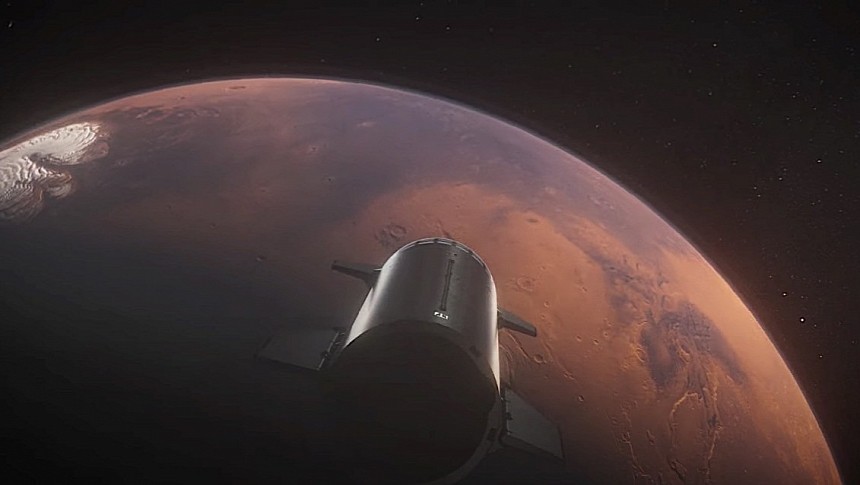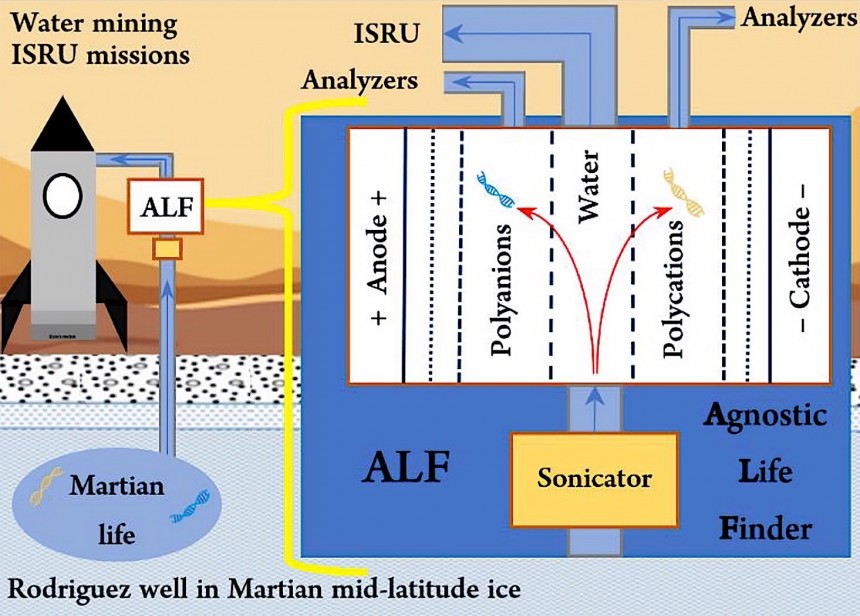It's probably only a matter of time before our species finally reaches Mars, opening the doors for humanity to expand its reach to a second planet in this solar system. It will be a slow and costly effort, but we will manage to make the place a home for us eventually.
That's great news for us, but not so great for whatever life may still be up there. That's right, life on Mars. We know for a fact the planet once had it (all we need is to prove it), but there are people, quite a lot of them, who insist life is present in some form on Mars as we speak.
We're not talking, of course, about sentient life, and not even about complex organisms, but by creatures that nonetheless will be seriously disturbed by our presence there. Because no, we do not come in peace.
Humans will not go to Mars with fighting in mind, because no matter what life is there, it's in no condition to fight. We will not go there to terraform the place because we don't have the means to do that yet. But we will go there to exploit the place.
One of the main pillars of planetary research for us is to use whatever resources we find on location. Called in-situ resource utilization, the process is meant to provide astronauts with the tools and materials they need to survive, conduct their work, and return home, all while relying as much as possible on local resources.
And one of the resources we can count on on Mars is water. It comes as near-surface ice and, among other things, it will be combined with carbon dioxide from the atmosphere to propel the vehicles we'll be taking to the Red Planet.
There is no actual plan in place for getting the water out from under the surface, but it's not hard to imagine how the entire process will work. Estimates are a mission to Mars will require mining operations capable of delivering hundreds of tons of water.
For the idea to work, the mining equipment will have to be sent there and start operations before the arrival of humans. And that, strangely enough, opens the doors for something that may prove revolutionary in astrobiology.
You see, for the time being, Mars is pristine, despite the fact our species has sent plenty of machines to study it. Once humans arrive things will change, as no matter what we do, contamination is likely unavoidable.
But the mining equipment I mentioned earlier, which will operate with no humans around, may prove ideal for scientists trying to prove the existence of life on Mars and study its complexities. That's because mining is just like sample collection operations, only on a much larger scale.
So why not use the time we have at our disposal to hit two birds with one stone: collect water for human use, and prove/investigate Martian life?
That's an idea NASA liked so much that it backed it this year through an Innovative Advanced Concepts (NIAC) program award. It was put forward by Steven Benner from the Foundation For Applied Molecular Evolution, and it is officially called Add-on to Large-Scale Water Mining Operations on Mars to Screen for Introduced and Alien Life.
Benner describes water mined in light of human arrival as "an extremely large-scale astrobiological sample, far larger than dry cached rocks." Given how it will also likely contain dust brought in by storms, it will also be a snapshot of the entire planet, not only of the place where the mining takes place.
The idea calls for the creation of an agnostic life-finding (ALF) system. It's for the time being a piece of tech that has not been fully detailed, but might change the way space exploration is done.
It will work on the assumption that Mars life forms use informational polymers the likes of DNA, and it will be capable of extracting the genetic makeup of these polymers from the water generated through mining.
The system, whose exact specifications were not disclosed, would also need to be capable of allowing for in-situ analysis of the samples, giving us a heads-up about the potential life forms humans could encounter at the landing site. ALF would be small enough to be a negligible addition to a mining system, both in terms of weight and cost.
In a nutshell, it would go a bit like this. Before humans launch for Mars, mining gear equipped with ALF is sent to Mars. While the main hardware is doing its job of digging up and storing water, the ALF is busy looking for signs of life in the same water.
The really interesting part about the ALF is that its applications are virtually limitless, and it could easily be adapted for use on other types of machines and on any world in the solar system and beyond it. The only condition is for the said place to have water.
There is no deadline for when a prototype of the system could be ready. NASA's backing of the idea means rocket guys like it, but in no way does it guarantee it will ever become a real thing.
We're not talking, of course, about sentient life, and not even about complex organisms, but by creatures that nonetheless will be seriously disturbed by our presence there. Because no, we do not come in peace.
Humans will not go to Mars with fighting in mind, because no matter what life is there, it's in no condition to fight. We will not go there to terraform the place because we don't have the means to do that yet. But we will go there to exploit the place.
One of the main pillars of planetary research for us is to use whatever resources we find on location. Called in-situ resource utilization, the process is meant to provide astronauts with the tools and materials they need to survive, conduct their work, and return home, all while relying as much as possible on local resources.
And one of the resources we can count on on Mars is water. It comes as near-surface ice and, among other things, it will be combined with carbon dioxide from the atmosphere to propel the vehicles we'll be taking to the Red Planet.
There is no actual plan in place for getting the water out from under the surface, but it's not hard to imagine how the entire process will work. Estimates are a mission to Mars will require mining operations capable of delivering hundreds of tons of water.
You see, for the time being, Mars is pristine, despite the fact our species has sent plenty of machines to study it. Once humans arrive things will change, as no matter what we do, contamination is likely unavoidable.
But the mining equipment I mentioned earlier, which will operate with no humans around, may prove ideal for scientists trying to prove the existence of life on Mars and study its complexities. That's because mining is just like sample collection operations, only on a much larger scale.
So why not use the time we have at our disposal to hit two birds with one stone: collect water for human use, and prove/investigate Martian life?
That's an idea NASA liked so much that it backed it this year through an Innovative Advanced Concepts (NIAC) program award. It was put forward by Steven Benner from the Foundation For Applied Molecular Evolution, and it is officially called Add-on to Large-Scale Water Mining Operations on Mars to Screen for Introduced and Alien Life.
Benner describes water mined in light of human arrival as "an extremely large-scale astrobiological sample, far larger than dry cached rocks." Given how it will also likely contain dust brought in by storms, it will also be a snapshot of the entire planet, not only of the place where the mining takes place.
It will work on the assumption that Mars life forms use informational polymers the likes of DNA, and it will be capable of extracting the genetic makeup of these polymers from the water generated through mining.
The system, whose exact specifications were not disclosed, would also need to be capable of allowing for in-situ analysis of the samples, giving us a heads-up about the potential life forms humans could encounter at the landing site. ALF would be small enough to be a negligible addition to a mining system, both in terms of weight and cost.
In a nutshell, it would go a bit like this. Before humans launch for Mars, mining gear equipped with ALF is sent to Mars. While the main hardware is doing its job of digging up and storing water, the ALF is busy looking for signs of life in the same water.
The really interesting part about the ALF is that its applications are virtually limitless, and it could easily be adapted for use on other types of machines and on any world in the solar system and beyond it. The only condition is for the said place to have water.
There is no deadline for when a prototype of the system could be ready. NASA's backing of the idea means rocket guys like it, but in no way does it guarantee it will ever become a real thing.






















